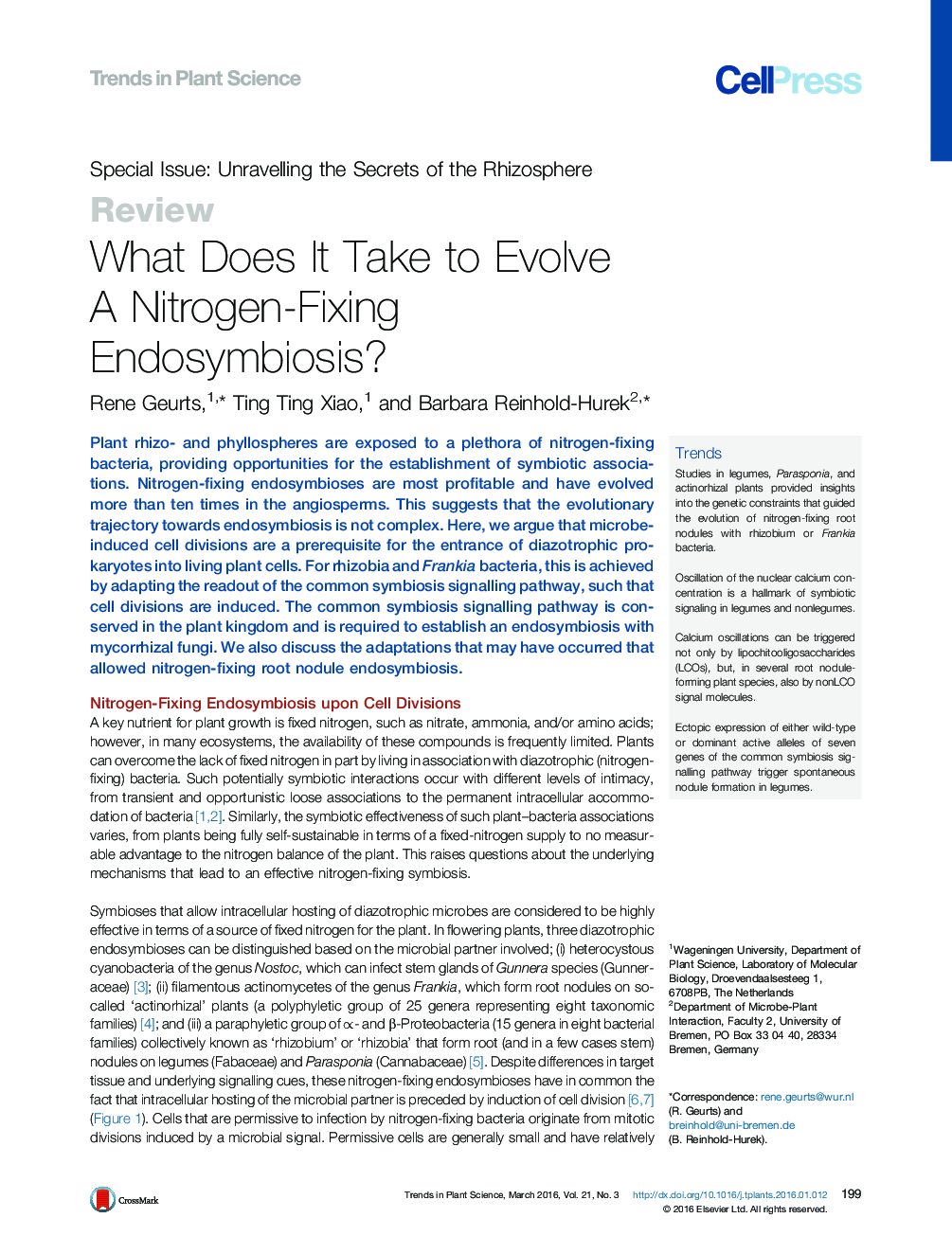| کد مقاله | کد نشریه | سال انتشار | مقاله انگلیسی | نسخه تمام متن |
|---|---|---|---|---|
| 2825747 | 1162168 | 2016 | 10 صفحه PDF | دانلود رایگان |
Plant rhizo- and phyllospheres are exposed to a plethora of nitrogen-fixing bacteria, providing opportunities for the establishment of symbiotic associations. Nitrogen-fixing endosymbioses are most profitable and have evolved more than ten times in the angiosperms. This suggests that the evolutionary trajectory towards endosymbiosis is not complex. Here, we argue that microbe-induced cell divisions are a prerequisite for the entrance of diazotrophic prokaryotes into living plant cells. For rhizobia and Frankia bacteria, this is achieved by adapting the readout of the common symbiosis signalling pathway, such that cell divisions are induced. The common symbiosis signalling pathway is conserved in the plant kingdom and is required to establish an endosymbiosis with mycorrhizal fungi. We also discuss the adaptations that may have occurred that allowed nitrogen-fixing root nodule endosymbiosis.
TrendsStudies in legumes, Parasponia, and actinorhizal plants provided insights into the genetic constraints that guided the evolution of nitrogen-fixing root nodules with rhizobium or Frankia bacteria.Oscillation of the nuclear calcium concentration is a hallmark of symbiotic signaling in legumes and nonlegumes.Calcium oscillations can be triggered not only by lipochitooligosaccharides (LCOs), but, in several root nodule-forming plant species, also by nonLCO signal molecules.Ectopic expression of either wild-type or dominant active alleles of seven genes of the common symbiosis signalling pathway trigger spontaneous nodule formation in legumes.
Journal: - Volume 21, Issue 3, March 2016, Pages 199–208
